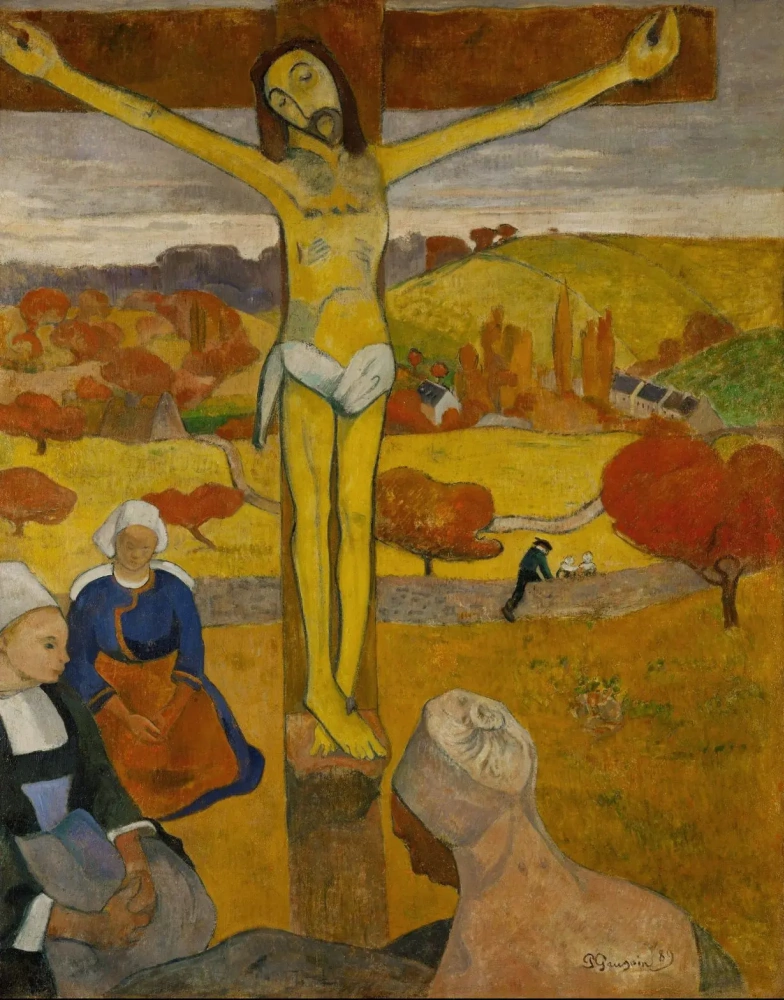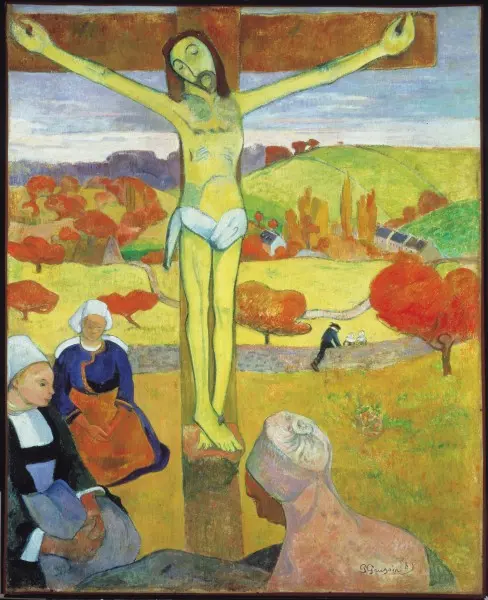log in
Enter site
Login to use Arthive functionality to the maximum
Yellow Christ
Paul Gauguin • Painting, 1889, 92.1×73.3 cm


















Description of the artwork «Yellow Christ»
This picture (as "Green Christ") was written by Gauguin shortly before his first trip to Tahiti, and it is very different from those of paintings, which is most often associated artist. In Port-Aven he settled in 1886 to escape the inevitable poverty and lived in a small Breton town until 1891, except for two months in Arles with Vincent van Gogh. Starting with the Breton period, Gauguin quite often drawn to religious subjects, but always interpreterpath their own way. In "the Yellow Christ" he uses powerful emotional theme of the crucifixion, bringing the biblical scene to Brittany XIX century and the surrounding suffering on the cross man French peasant women in traditional dresses of the time.
A similar technique to Gauguin used many of his predecessors. However, the technique used by the artist, was at the time innovative. The canvas is divided into clearly delineated segments of bright colors, written in the style of cloisonism. To create a "Yellow Christ," Gauguin was inspired by the painted wooden crucifix in one of the churches near Port Aven. Yellow, according to the artist, he chose the primary to convey their own feelings of loneliness and solitary life among the Breton peasants.
Gauguin depicted Christ in that moment, when his face expresses not suffering, and almost a hopelessness and resignation. The yellow color of his body resonates with the colors of the surrounding autumn landscape. It is possible to draw some Parallels between the agricultural and religious life cycle: birth – life – death – rebirth. Analyzing the painting of Gauguin, the researchers compare the crucifixion of Christ with the fall (harvest time), three days in the grave – barren in the winter, and finally, resurrection in the spring, bringing new life to nature.
Author: Eugene Sidelnikov
A similar technique to Gauguin used many of his predecessors. However, the technique used by the artist, was at the time innovative. The canvas is divided into clearly delineated segments of bright colors, written in the style of cloisonism. To create a "Yellow Christ," Gauguin was inspired by the painted wooden crucifix in one of the churches near Port Aven. Yellow, according to the artist, he chose the primary to convey their own feelings of loneliness and solitary life among the Breton peasants.
Gauguin depicted Christ in that moment, when his face expresses not suffering, and almost a hopelessness and resignation. The yellow color of his body resonates with the colors of the surrounding autumn landscape. It is possible to draw some Parallels between the agricultural and religious life cycle: birth – life – death – rebirth. Analyzing the painting of Gauguin, the researchers compare the crucifixion of Christ with the fall (harvest time), three days in the grave – barren in the winter, and finally, resurrection in the spring, bringing new life to nature.
Author: Eugene Sidelnikov



